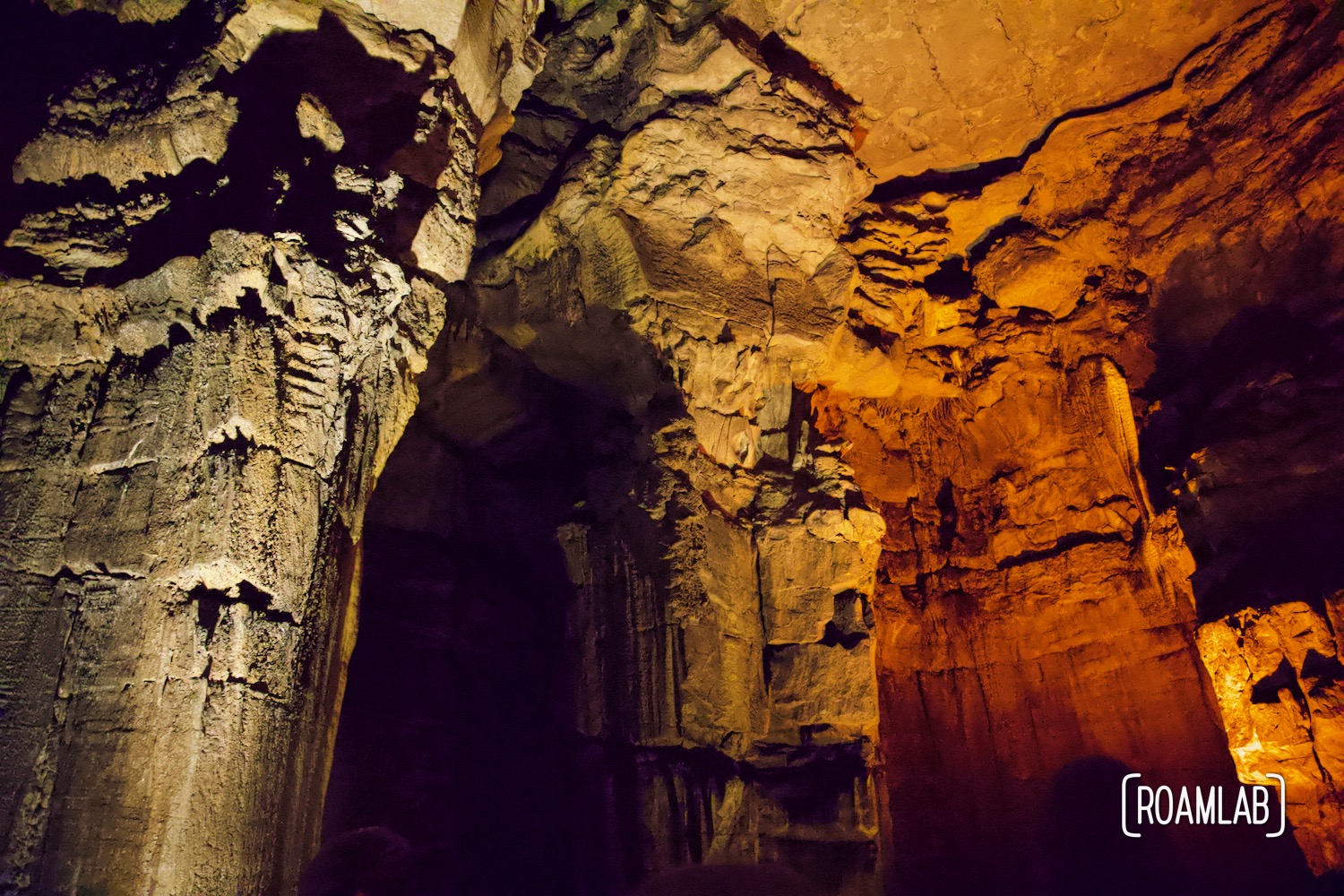As the longest known cave system in the world, Mammoth Caves National Park isn’t the kind of destination that can be fully explored in a single tour. As such, numerous tours lead by park rangers explore different sections and subjects around Mammoth Caves. The River Styx Tour dives deep into the geologic forces that have and continue to shape the Mammoth Caves.
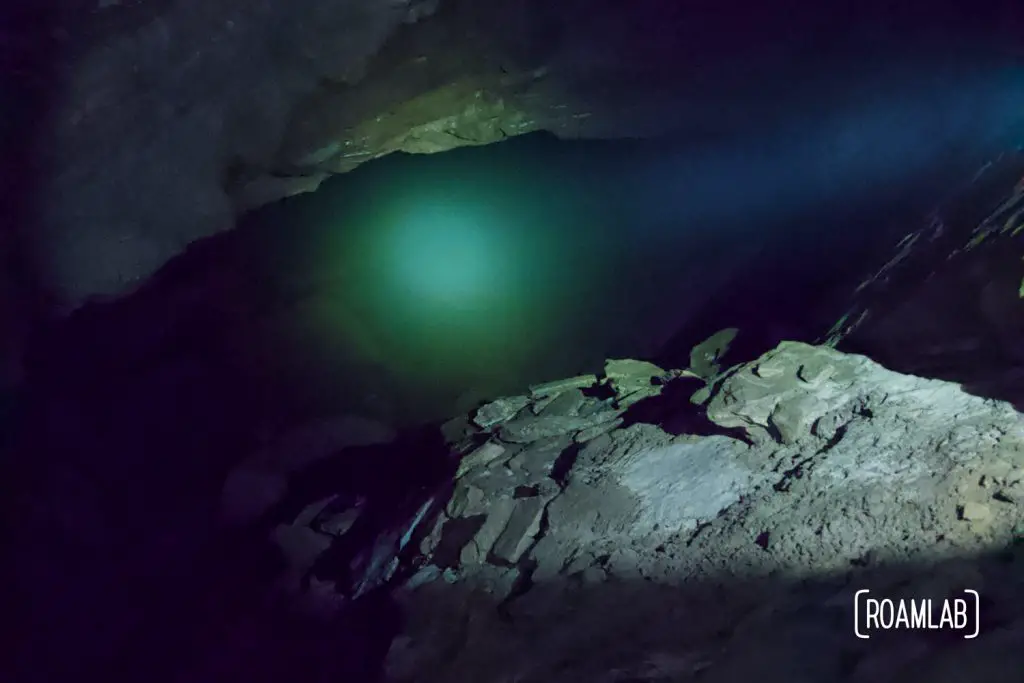
A Note About Accessability
The tour roughly follows the same route as the Historic Tour. Both enter through the historic entrance and wind deep below ground. Though the River Styx Tour delves a little deeper to catch a few peeks of the River Styx. While much of the route is along evenly graded gravel, the deeper the tour travels, the narrower and more uneven the path gets. Sections such as Fat Man’s Misery squeeze hikers between narrow rock walls. And low-hanging rocks can result in a few bumped heads.
As the tour reaches its deepest point, the route drops below the seasonal flood level. Here, the electrical lights that illuminate the rest of the cave cease. The tour continues by lantern light which can be difficult for those with poor eyesight. Along with the light, gone is the gravel walkway. The silty path that remains can be incredibly slippery. Finally, the end of the tour means a long climb to the surface via a winding spiral staircase. While the tour guides are lenient with those who may need to pause to take a breath, there is no elevator to bypass this final challenge. Overall, the route is doable for most visitors. But for those with limited mobility, there are other tours that have been designed to be more accomodating.
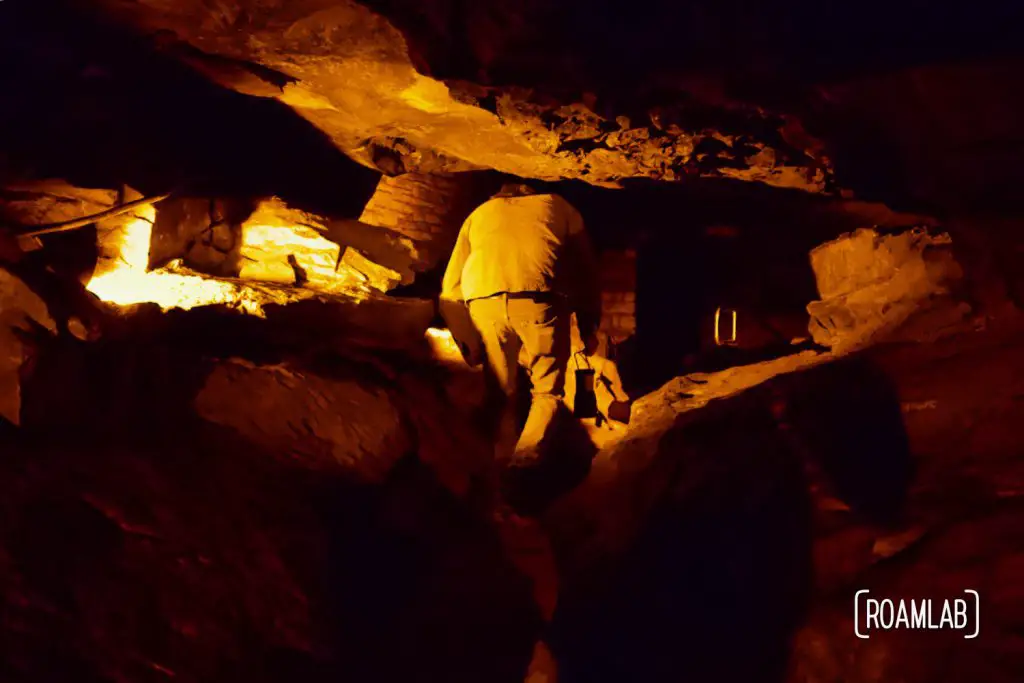
A Landscape Made For Caves
The River Styx tour begins above ground, just behind the Visitors Center. Tour groups meet with park rangers to get an overview of their route. With those formalities completed, we take a short hike to the historic cave entrance. As we first descend to the entrance, we encounter sandstone: a gritty rock that acts as a roof 50 to 60 feet thick over Mammoth cave. As we enter the cave, we sink into limestone. Here, slightly acidic water dissolves minerals in the limestone and slowly creates the channels that form Mammoth Cave. The sandstone cap keeps water from entering above. So, that the only dissolving action comes from water traveling horizontally, allowing the caves to be so long.
This type of cave is known as a Solution Cave. The wide chambers and rock formations that we will encounter are all the product of water dissolving limestone. We traveled up a ridgeline to reach the Visitors Center over the Mammoth Caves. Thus, we start high above the table water line and the nearby Green River. The water in Mammoth Caves flows with the tilt of the rock towards the Green River. At some point, the passageways we are hiking were flooded and worn away by a subterranean river. But now that river is much lower though not too low for us to reach. It is, after all, the name of our tour: the River Styx. The subterranean water emerges as springs that feed the river. They are technically tributaries of the Green River.
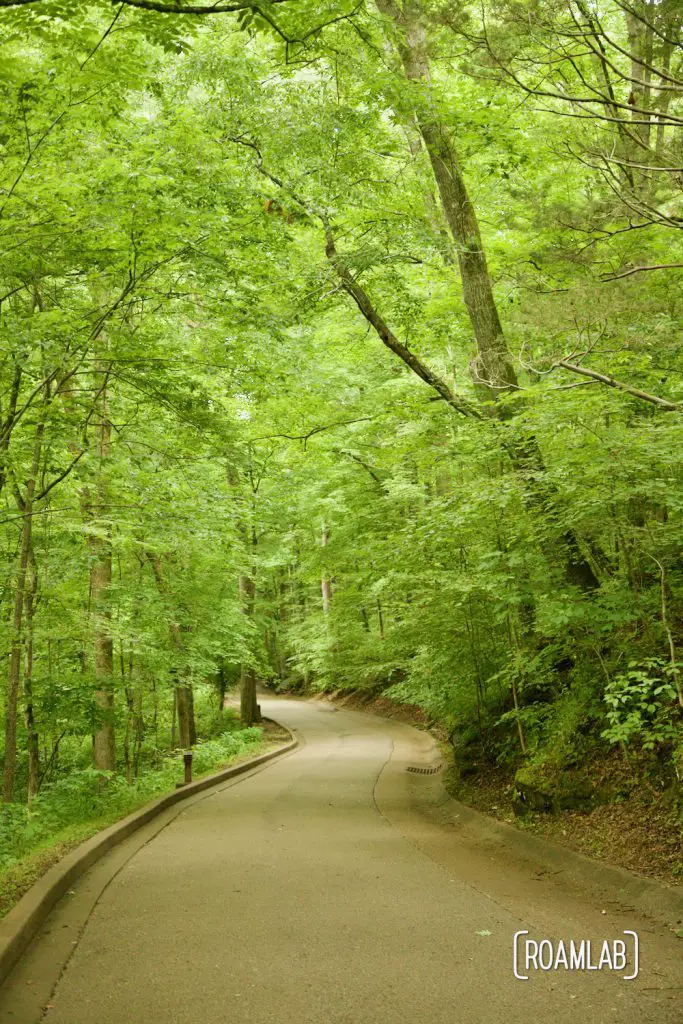
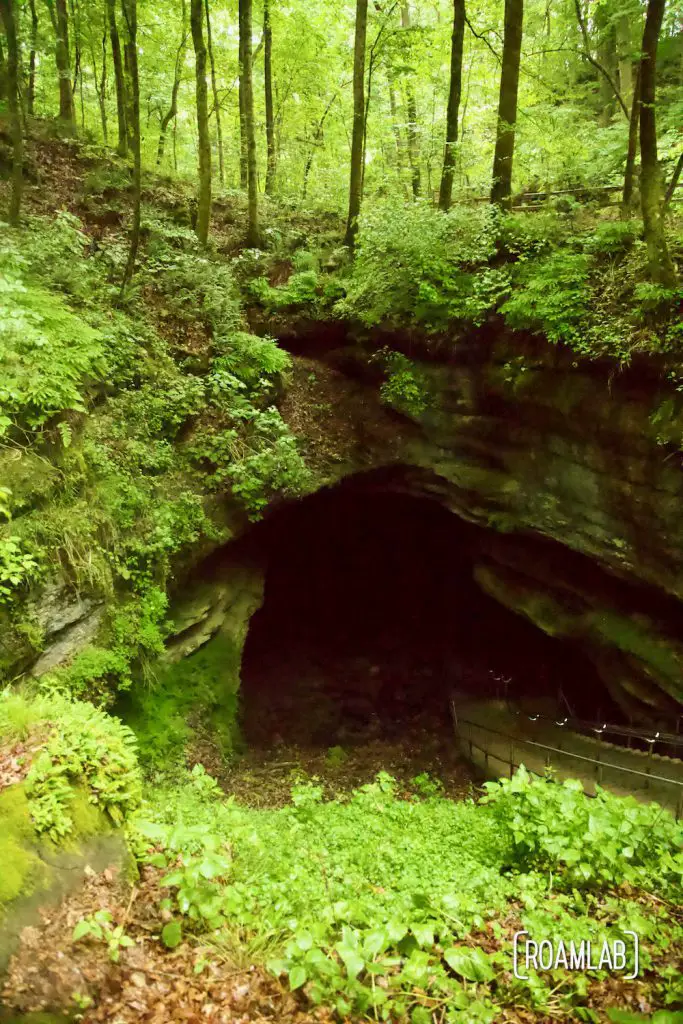
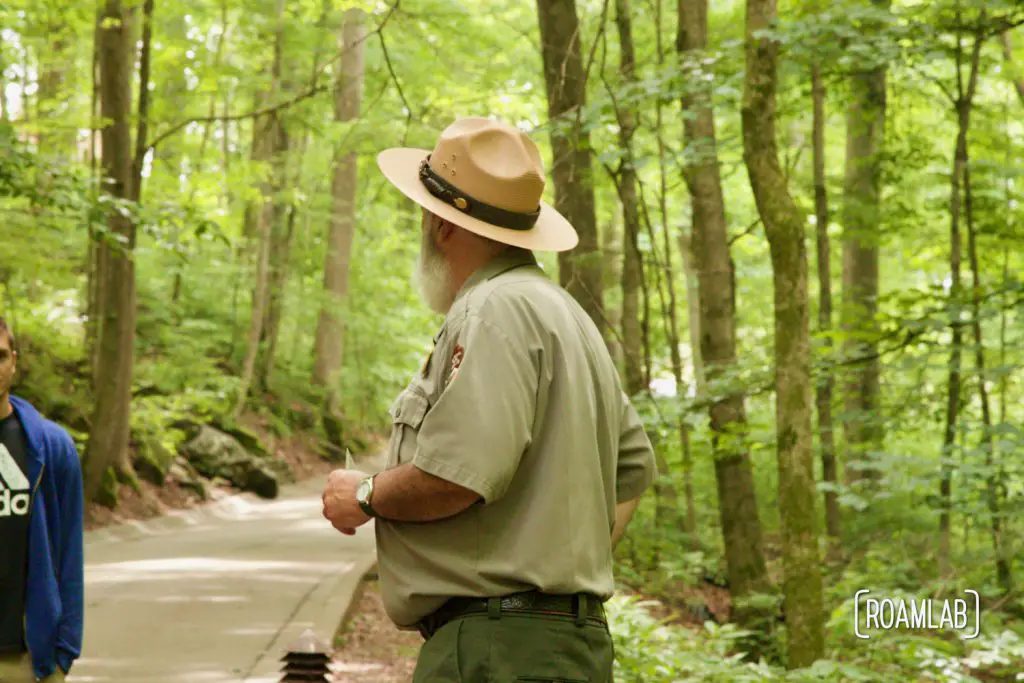
The Law of Superposition
Traveling through Mammoth Cave, we travel down into the geologic history of the region. This is the Law of Superposition: in any body of undisturbed rock, the oldest strata will be at the bottom with newer rock deposited on top, over time. Limestone is collected in the beds of warm shallow seas. Sandstone is found in ancient deltas. Mammoth Caves exemplifies the geological history of the area. While the surface landscape is full of green rolling hills, this was once a warm shallow sea that eventually shifted into a delta during the Mississippian period.**
Our tour covers three distinct formations in the caves. The uppermost formation is the Gerkin followed by Saint Genevieve and Saint Louis. Each comes from a warm shallow sea but is distinct from the others. Each layer is named after rock formations first encountered in those respective locations. St.louis is rather self-explanatory: this sandstone deposit was first encountered in Saint Louis, Missouri. The same body of rock stretches to the Mammoth Caves. Saint Genevieve is also a location in Missouri while Gerkin is a little closer to the caves. We can see the contact between the Gerkin and saint Genevieve formations as we travel down into the cave. And we will encounter the beginning of the Saint Louis layer when we reach the River Styx.
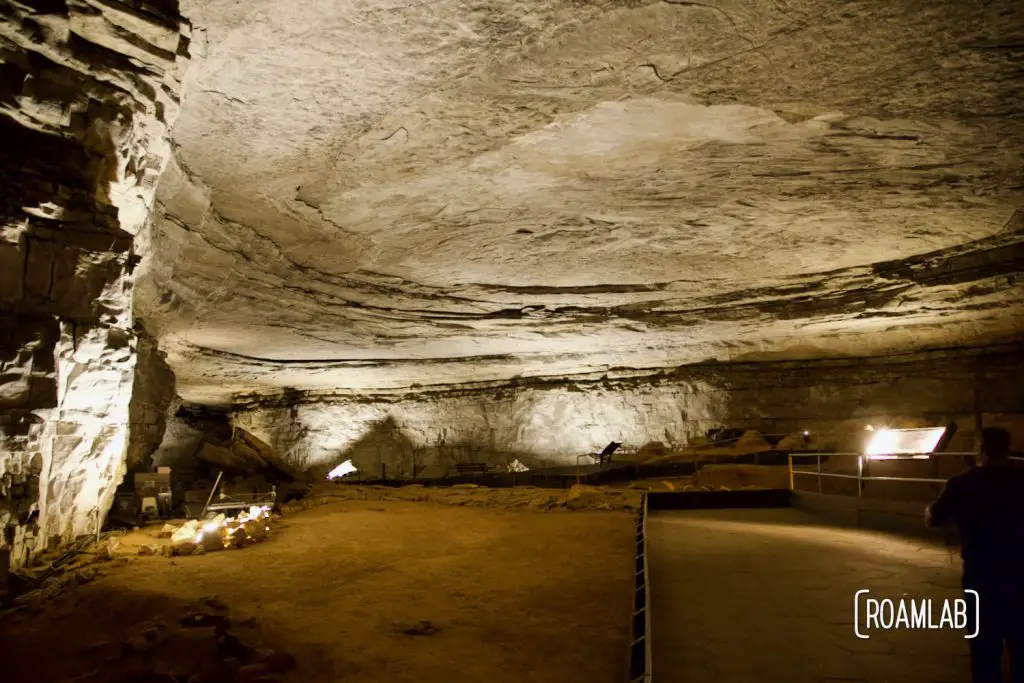
From Broadway to Misery
The initial descent in the cave is through the Rotunda Room and Broadway, both impressively large subterranean spaces. These represent a long and relatively stable period of geologic history. The subterranean river continued to carve out these large openings over extended periods of time.
When the tour shifts into a narrower passage and descends more steeply, we enter a route that represents a shorter period of time and erosion. The river flowed through these passages and dissolved the limestone enough for us to hike through. Yet, it continued to drop before it could carve out large passageways as encounter above. This marks a time when the sea level was unstable.* It accounts for the smaller passages between the 2nd through the 5th levels of the cave. These are typified by narrow squeezes at Fat Man’s Misery, low-hanging rock in Tall Man’s Misery, and lots of quick drops that we rely on stairs to traverse.
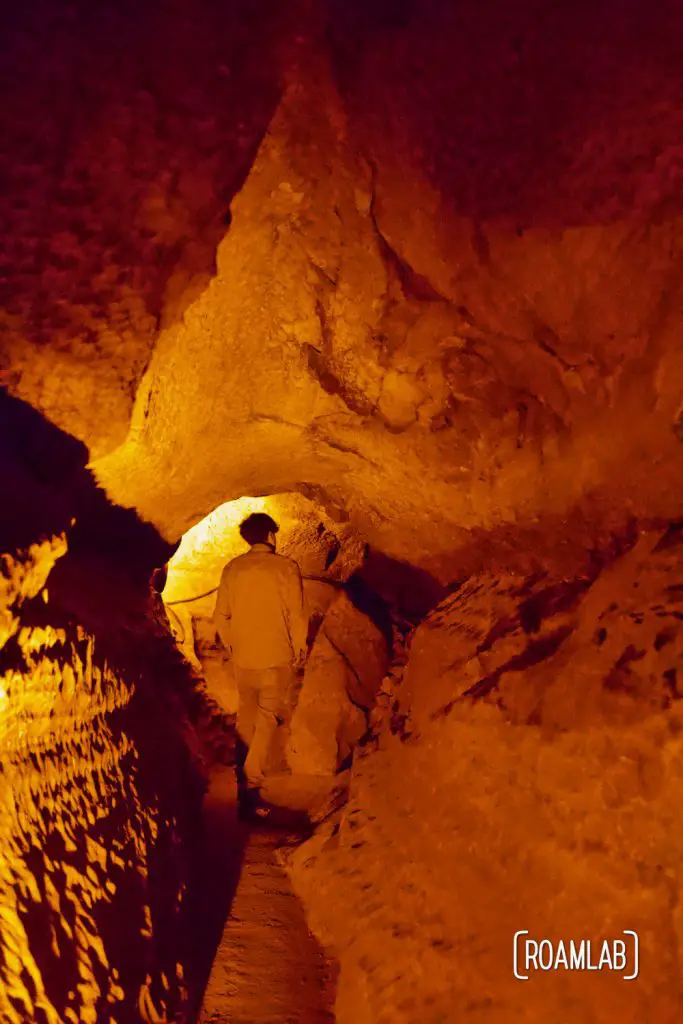
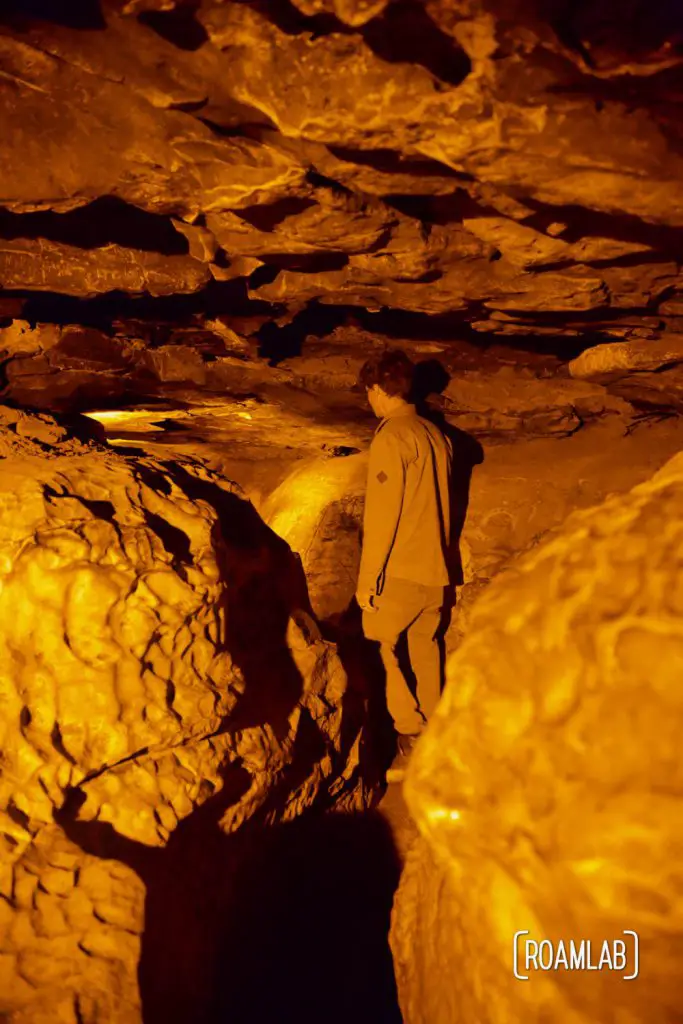
River Styx
We have been accustomed to cave tours highlighting columns, stalactites, stalagmites, and other dramatic rock features such as Ruby Falls. But these are the product of vertical water flow, depositing minerals as the water travels down. As noted before, the sandstone cap over Mammoth Caves prevents water from entering above. Thus, most of the water here flows horizontally. This is what made the Mammoth Caves the longest known cave system in the world. But it also means that there are few notable rock formations. The Bottomless Pit is an exception to the horizontal flow. This vertical passage once marked the end of the tour. Until 1835 when cavers laid a ladder over the pit and descended to the River Styx.
Like rivers above ground, the River Styx seasonally floods. While most of the tour is conducted through well-lit passages, the cave is not wired below the seasonal flood line. Instead, we rely on lanterns. The soft and muddy trail that descends past the flood zone warrants a heavy tread. Before handrails were installed, the narrow ledge skirting the Dead Sea would make one feel even closer to literal peril. On one particularly slick steep stretch, our guide unintentionally demonstrated his skiing prowess. A misstep has him skidding down slick cave silt, a significant reminder of this unstable terrain.
Back in the day, guides gave boat tours on the River Styx. Today, we stay at a distance, catching glimpses of the river from the trail. The route continues past our stopping point of the River Styx tour. But worn-away boardwalks and the unstable ground have us turning back after a River Styx overlook. Even so, we have seen more of the subterranean River Styx than any other tour in Mammoth Cave.
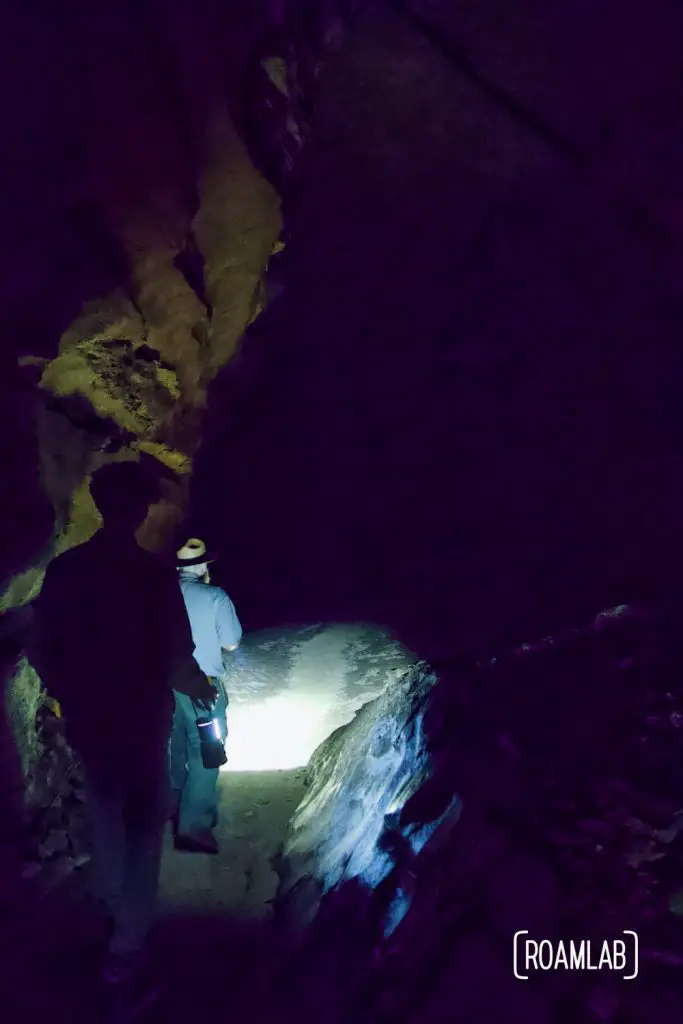
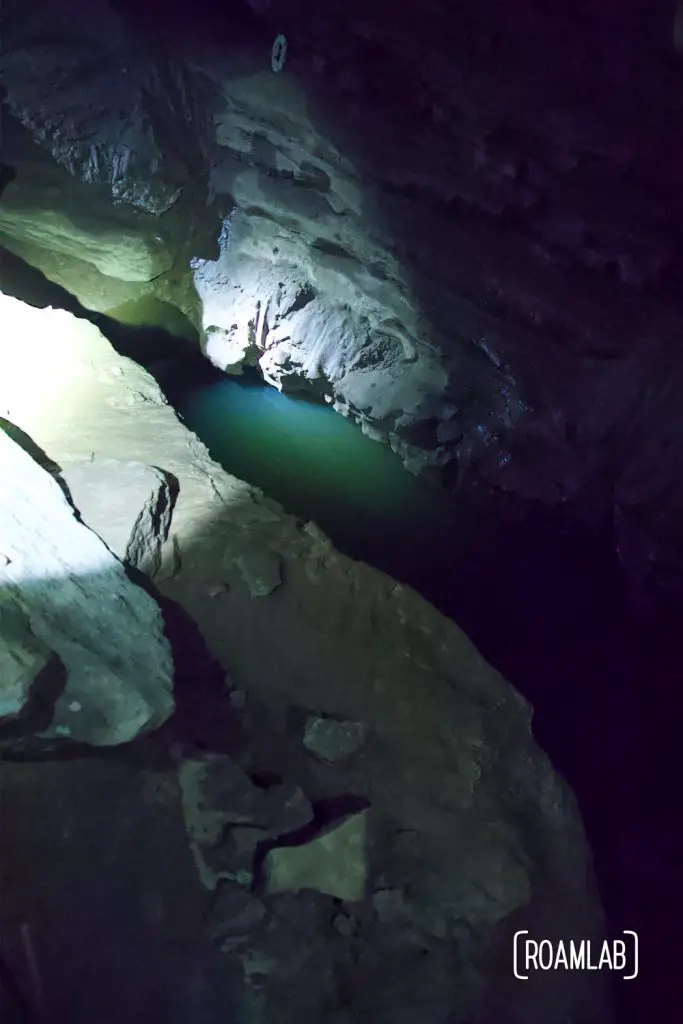
Mammoth Dome
After the River Styx, the tour has reached its deepest point. So, it is time to hike back to the surface. Luckily, there is very little backtracking and the new sections cover some of the most remarkable parts of the tour. Mammoth Dome is a vertical shaft over 190 feet tall. Despite the relatively large chamber that we are in, it’s hard to capture the sheer scale of this rock formation. The rippling rock walls leave tour guests staring up with mouths agape.

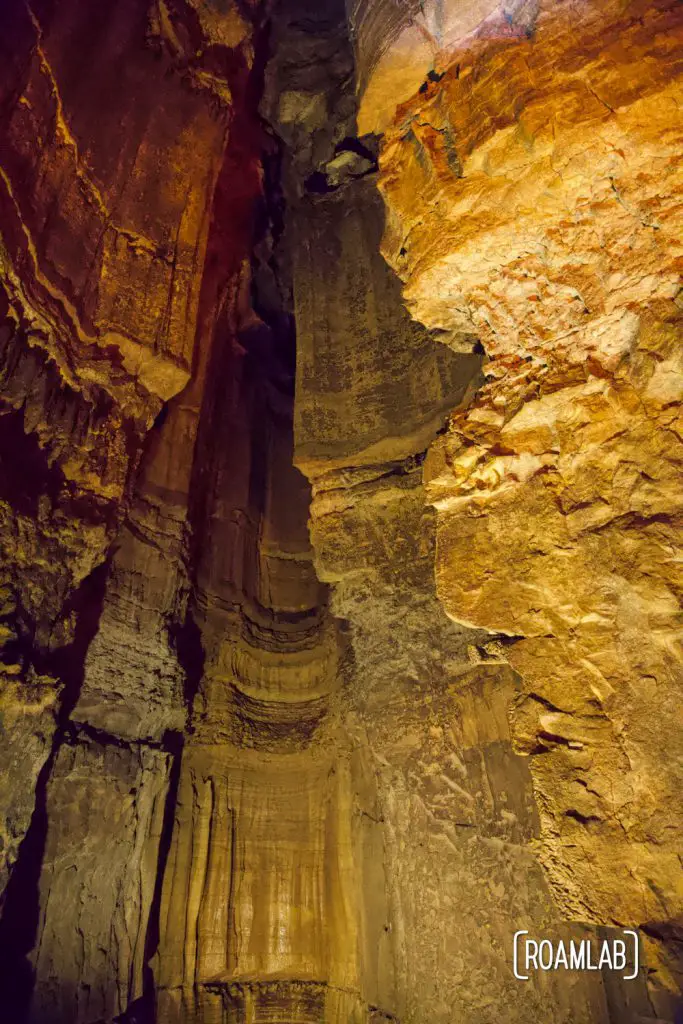
Ruins of Karnak
Within the eyesight of Mammoth Dome is another remarkable chamber known as the Ruins of Karnak. The pillar-like formations do bear a notable similarity to the rows of columns found in the ancient temple complex of Karnak in Luxor, Egypt. Instead of carved and weathered freestanding columns of Hypostyle Hall, however, Mammoth’s ruins are naturally formed by the same water erosion as the rest of the cave.
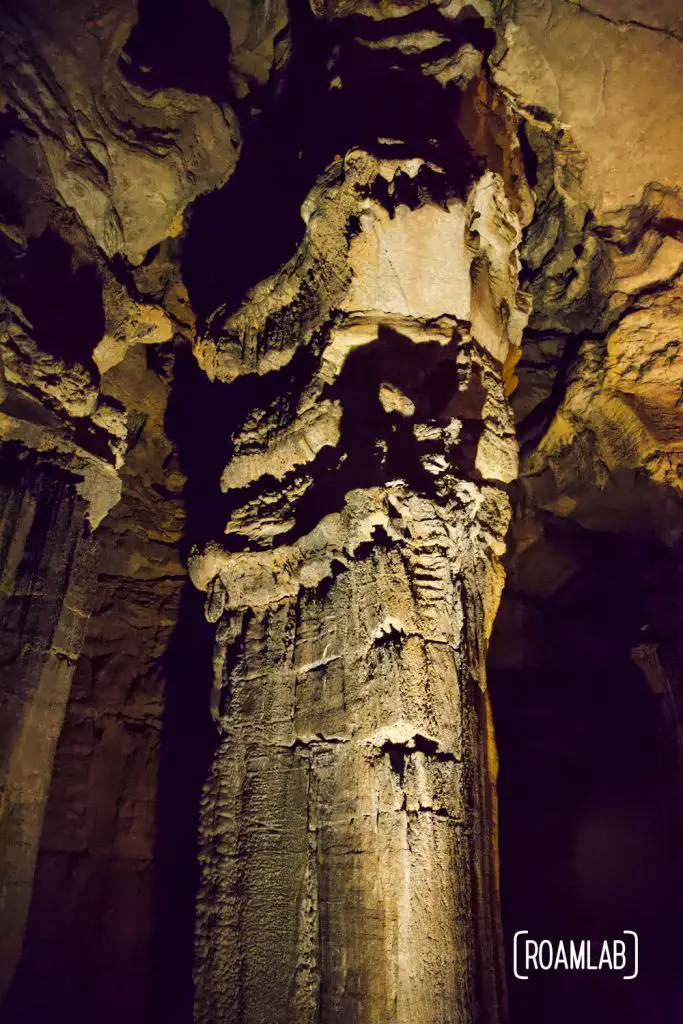
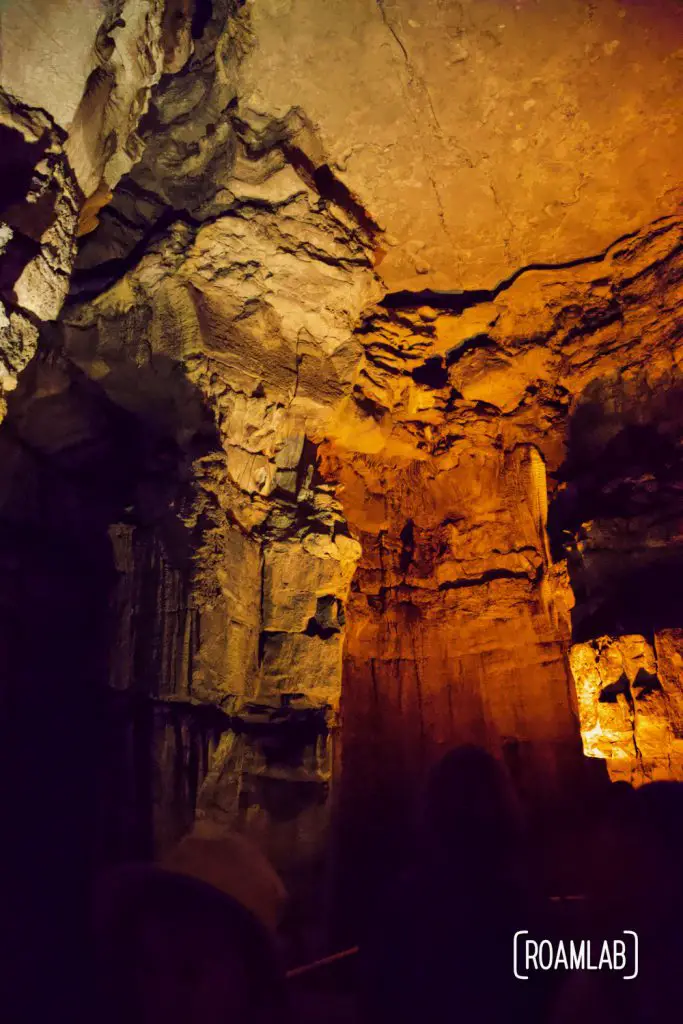
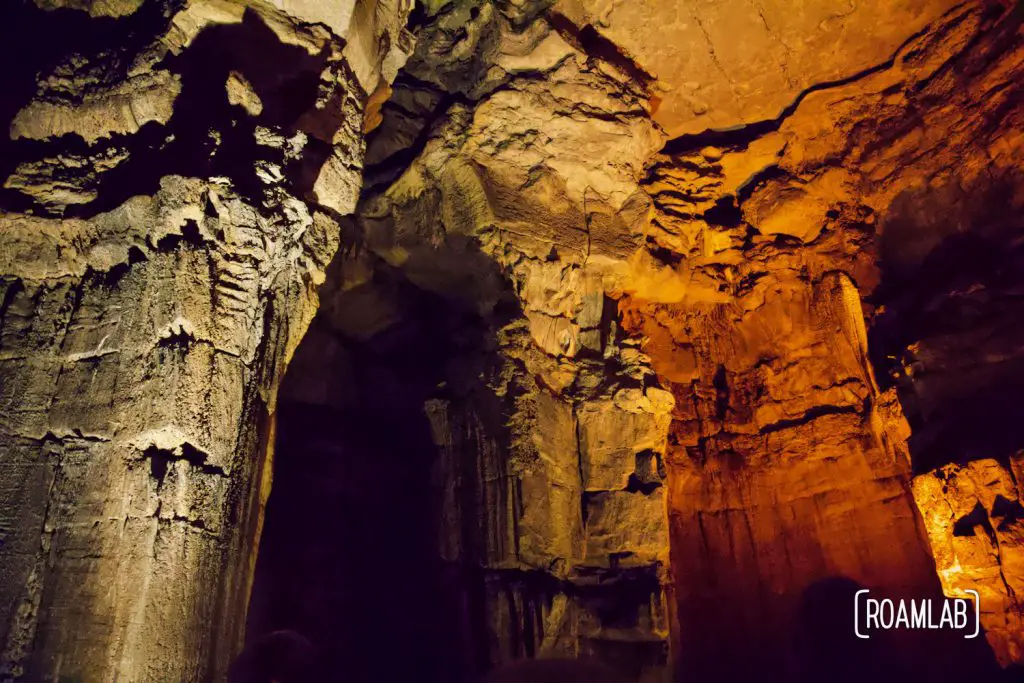
A Living Cave
As we leave this massive cave system, it’s hard to imagine that something as simple as water could create something so grand. People look to explain these dramatic places in catastrophic events. An earthquake fault shifting mountains. A volcano burying the landscape. A flood displacing boulders. But Mammoth Caves is evidence of the slow nature of time: uniformitarianism. Only 300 years ago did science recognize this process. And even today, visitors are witness to the same processes that created the cave and will continue in the future.
* So the wider passage is carved during a time when the sea level was stable. But the narrower passages represent a period of unstable sea levels with younger narrower caves
**In recent news, 60 different species of sharks tooth fossils have been identified in the saint Genevieve limestone deposits.


